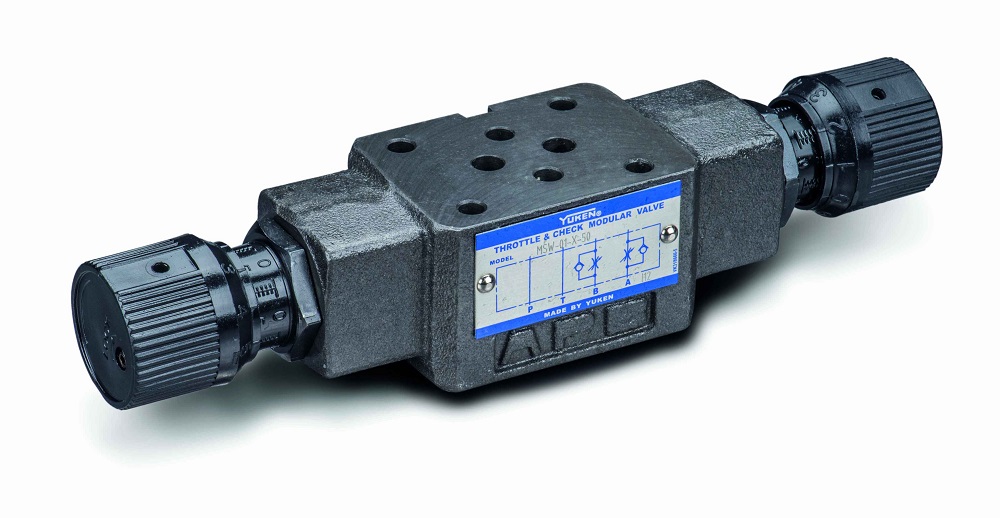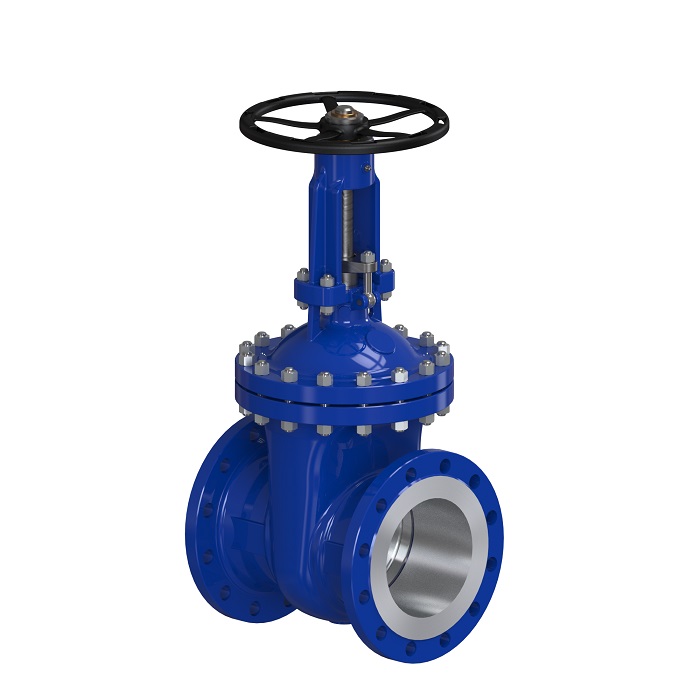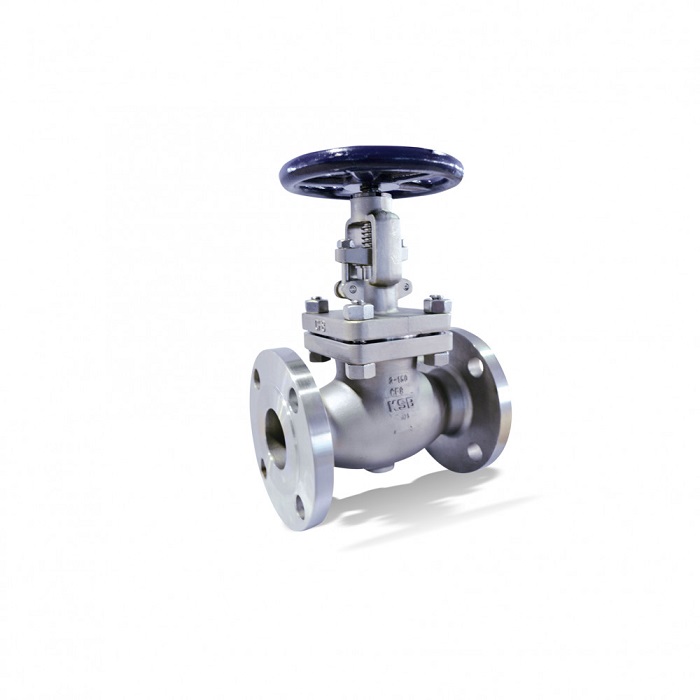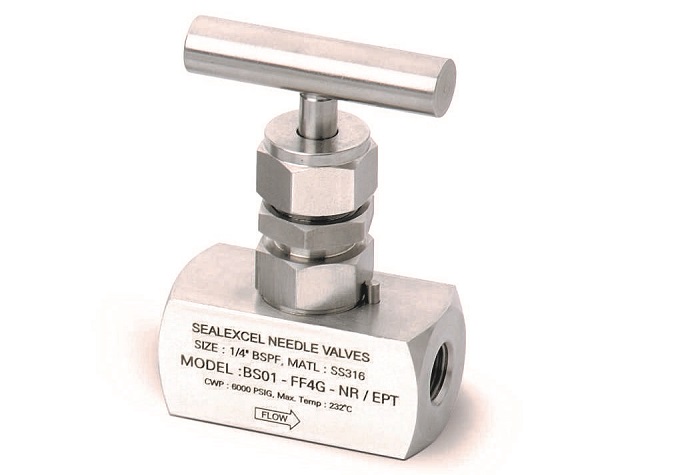In this article from Linquip, we want to talk about different flow control valve types and teach you all you need to know about their Valves materials, functions, uses, etc. Use this article as your main guide to choose the right flow control valve type for your system.
First things first:
⇒ View a Comprehensive List of Valves and Their Suppliers ⇐
What are the flow control valves?
Flow control valves are units designed to regulate the pressure or the flow of a fluid. There are a few devices such as temperature gauges or flow meters, providing signals for flow control valves which intrigues their operation.
Most common flow control valve types
The most popular flow control valve types are Gate Valves, Needle Valves, Diaphragm Valves, Globe Valves, and Pinch Valves. Now we’ll explain about these types in details and talk about their functions.
-
Gate Valves
One of the most popular control valves is a gate valve with a wide variety of use. It can be used for on/off and non-throttling services. You can use this flow control valve type for applications that need straight-line liquid flow and minimum restriction.
Gate valves operate with the rotation of the stem. There are two moves for its operation: clockwise to open (CTO) and clockwise to close (CTC). With the movement of the stem by the operator, the gate moves up or down on the threaded step. Since the valve should turn multiple times to reach the close state or open state, then it’s considered as a multi-turn valve. This slow operation from opening to closing and vice versa prevents water hammer effects.
This type of flow control valve is suitable for controlling several fluids such as potable water, neutral liquids, and wastewater. The suitable temperature for these liquids should be somewhere between -20 to 70 degrees Celsius depending on the fluid. Their flow velocity should be under 5 meters/second, and they should have up to 16 bar differential pressure for them to be applicable.
Gate valves are also capable of providing minimum pressure loss and help when a free bore is required because they usually have no obstruction in the flow path.
Read More on Linquip
- What is Seat Valves
- What is Solenoid Valve
- What is Sprinkler Valve
- What is Valve Controller
- Facts About The Flow Control Valve Function
- The Essential Guide To Solenoid Valves Working Principle
-
Pinch Valves
Pinch valves are among flow control valve types that are affordable and popular in the industry. They use flexible elements such as rubber tubes for sealing purposes. Designed to help the valves to tightly seal around entrapped solid with their flexibility, these rubber sleeves are the only moistened part in a pinch valve. These types of control valves are amazing for liquids that contain a significant amount of suspended solids. The body of this type of flow control valve acts as a built-in actuator, eliminating the need for expensive operators such as pneumatic, hydraulic, or electric operators. A truly affordable and cost-effective flow control valve!
Read More on Linquip
- Types of Pneumatic Valves: Specifications and Working Principles
- Types of Hydraulic Valves and Their Working Principles
- Control Valve Types 101: Different classifications, advantage, and disadvantages
- Angle Valve: The Most Essential Tips of Features, Functions & Applications
- Types of Expansion Valves: an Easy to Understand Guide
- Control Valve Parts: The Go-To Guide for beginners and experts
- Everything You Need To Know About Check Valve Function
-
Globe Valves
Globe valves are perfect for starting, stopping, and regulating the flow with a linear motion. This kind of flow control valve type is used for throttling applications since the valve disk can be removed completely from the flow path. They are capable of completely closing the flow path as well.
Unlike Gate valve, plug valve, and ball valve that are straight-through valves; Globe valves produce slightly higher pressure drops. The closure in a globe valve initiates via a plug that includes a flat or convex bottom. This unit is then lowered onto a horizontal seat at the center of this flow control valve type. The plug in the globe valve raises when the user opens it, and as a result, it allows the fluid to start flowing.
You can use gate valves in different situations, like when the pressure drop through the valve is not important and is not considered as a controlling factor.
-
Diaphragm valves
Diaphragm valves are other popular kinds of flow control valve types. They can handle situations that need erosive, corrosive, and dirty services. They are famous for their flexible disc contacting the top of the valve body that contains the seat to form a seal. Diaphragm transmits force to control, opening, or closing a valve and is also pressure-responsive and flexible. The characteristic of diaphragm valves is the use of elastomeric diaphragm in the valve body instead of an elastomeric liner, which is attached to a compressor to separate the closure element from the flow stream.
Diaphragm valves are great since they feature a leak-proof seal and are easy to maintain. They also have a tight shut-off and are capable of reducing leakage to the surrounding environment. And they should be used in moderate pressure of about 300 psi and moderate temperatures between -60 to 450 degrees Fahrenheit. So no high pressure or really hot temperature for this one!
See All Diaphragm valve for Sale
Read More on Linquip
- Check Valve Suppliers and Companies in United States
- Gate Valve Suppliers and Companies in United States
- Seat Valve Suppliers and Companies
- Safety & Relief Valve Suppliers and Companies
- Control Valve Suppliers and Companies in United States
- Other Valves Suppliers and Companies in United Kingdom
- Audco Valves Suppliers and Companies
-
Needle valves
The last item on the most popular flow control valve types is the needle valve. This type is similar to the globe valve in some features. Needle valves are used for volume control. They are suitable for restricting the flow in small lines. The fluid that moves in this valve turns 90 degrees and then flows through an opening. This orifice is the seat of a rod and its size changes by the user.
Needle valves can achieve a better precision comparing to Globe valve, which makes them the a perfect choice for calibration applications, not to mention that needle valves can be fine-tuned for more precise results. You can use needle valves in different industries such as biofuels and petrochemicals. The only down point of the needle valve is that they need more than visual inspections to determine whether the valve is closed or open. Capable of providing positive shut-off, needle valves can allow measurement instruments and gauges to be removed or installed safely. So, they have their own advantages after all!
There are other types of flow control valves such as butterfly valve, plug valve, and ball valve. But these ones are the most popular in the industry.
Now that you’ve read everything about flow control valve types, are you ready to share your experiences with Linquip? Use the comment section to share your stories and experiences. And if you have any questions about flow control valve types, feel free to sign up on our website to get access to some of the most brilliant experts in the industry to help answer all your questions and solve your problems.
Read More on Linquip
- Control Valve Manufacturers in United States
- Angle Valve Manufacturers
- Butterfly Valve Manufacturers
- Check Valve Manufacturers
- Air release valve Manufacturers
Buy Equipment or Ask for a Service
By using Linquip RFQ Service, you can expect to receive quotations from various suppliers across multiple industries and regions.
Click Here to Request a Quotation From Suppliers and Service Providers







Do you have equivalent brand for the following items listed below? These are flow control valves are DRESSER brand
a. SD87068 DN65 P/N 6.26MPA (G) 7.772mm Type: 2735B-2-X1-F1-R1
b. SD87069 DN50 P/N 6.32MPA (G) 7.772mm Type: 2725B-1-X1-F1
c. SD87070 DN50 P/N 5.64MPA (G) 8.585mm Type: 2726D-1-X1-F1. S/N SD8706870